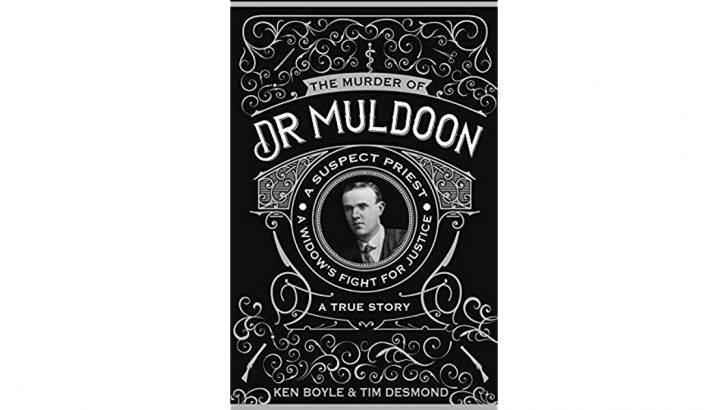The Murder of Dr Muldoon
by Ken Boyle & Tim Desmond (Mercier Press, €12.99)
Dr Patrick Muldoon was a GP in Mohill, Co Leitrim. On March 18, 1923 he attended his weekly Sunday-night card game at the parochial house with his friends Canon Michael Masterson and Edward Geelan, clerk of the District Council. On his way home he was waylaid by three men and one of them shot and fatally wounded him.
Later it transpired that it was John Charles Keegan who murdered Dr Muldoon. He was an activist during the War of Independence. Following the Anglo-Irish Treaty, he joined the Irish Free State army. However, soon afterwards he defected and became a member of the Anti-Treaty IRA.
He was a psychopath and was responsible for some of the worst atrocities which occurred in the Leitrim – Longford area during the closing months of the Civil War.
After his capture by the army he was incarcerated with Éamon de Valera and Austin Stack in Arbour Hill Prison in Dublin. He was released under the General Amnesty of November 1924.
However, after his release the Civic Guard took a case against him and a colleague and they were convicted of obstructing three unarmed Civic Guards in the exercise of their duty. For this both served six months in Mountjoy Prison.
Keegan departed to the US in late 1925. He returned home in 1964. Despite many appeals to President de Valera, it took him seven years to acquire a military service pension. He seems to have been ostracised by his former comrades.
Assailants
In 1966 an Old IRA march taking place in Mohill was held up, as participants objected to Keegan’s presence. He spent his final years in England and died in Leeds in 1977.
Fr Edward Ryans was also implicated in the murder of Dr Muldoon. It was claimed that he drove the doctor’s three assailants into Mohill on that fateful night.
Fr Ryans was ordained in St Patrick’s College, Maynooth, in 1911.
He ministered in a number of curacies: Annaduff and Aughavas in Co. Leitrim and Abbeylara and Rathcline in Co. Longford.
From its very beginnings he was a staunch supporter of the Sinn Féin movement. He was president of the Executive of the Sinn Féin Clubs in South Leitrim and was regarded as the architect of Sinn Féin’s famous victory in the South Longford by-election in 1917.
This is a tragic story with depressing undertones not adverted to here. It is also a cautionary tale”
Later Fr Ryans served as a judge in the Sinn Féin courts in the area. During the War of Independence he was actively involved with the IRA and, during the months preceding the Truce, was on the run from the crown forces.
Fr Ryans opposed the Anglo-Irish Treaty and was actively involved in the Anti-Treatyite campaign. In the meantime for serial serious misconduct in his personal life and his political activism he was dismissed from his curacy by his bishop.
In April 1923 he was before the court on charges for possession of arms, ammunition and explosives.
Ryans escaped conviction by claiming that his brother, then in the US, was responsible for hiding the cache of arms.
Following his arraignment in Court, to the great relief of his clerical colleagues he himself emigrated to the US in October 1925.
Returning home a few years later, he unsuccessfully attempted to be reinstated in his diocese. He then emigrated to England, where he died in 1964.
This is a tragic story with depressing undertones not adverted to here. It is also a cautionary tale.
It illustrates how the lawlessness induced by revolution provides the opportunity for persons with flawed characters to cause immense harm both to individuals and to the community at large.



